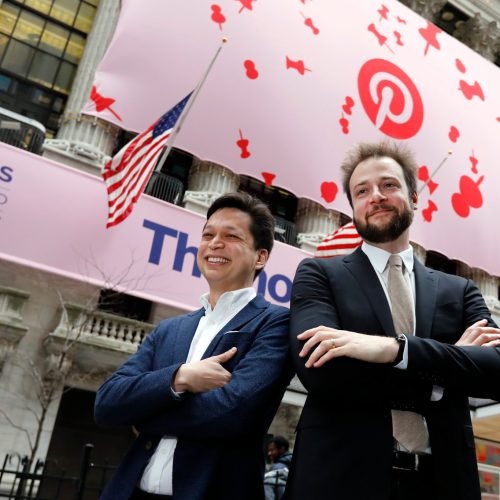To become one of the famous coffee brands in the world, Starbucks has built and implemented effective business strategies. Let’s learn and analyze Starbucks’ business strategy in detail through the article below.

Overview of Starbucks Coffee
According to Wikipedia , Starbucks is a famous coffee brand in the world. Starbucks coffee company is headquartered in Seattle, Washington, USA; In addition, the company has 17,800 stores in 49 countries, including 11,068 stores in the United States, nearly 1,000 in Canada and more than 800 in Japan.
The first Starbucks coffee shop was founded at 2000 Western Avenue (Seattle, Washington) on March 30, 1971 by three people: Jerry Baldwin – English teacher, Zev Siegl – history teacher and Gordon Bowker – writer. literature.
Inspired by Alfred Peet, founder of Peet’s Coffee & Tea, the founders of Starbucks initially purchased green coffee beans from Peet’s. Some time later, the shop moved to 1912 Pike Place, where it still exists, and they also began buying coffee beans directly from the farms.
Founded on March 30, 1971 in Seattle, Starbucks was then just a small store specializing in selling premium coffee and coffee grinding equipment. The history of this coffee shop changed when Howard Schultz – the famous CEO of Starbucks – realized the potential of bringing the Italian coffee service style to America.
Howard Schultz joined the company in 1982 as director of retail operations and marketing. After a trip to Milan, Italy, he came up with the idea that the company should sell both bean coffee as well as ground coffee. The owners rejected the idea, believing that going into the beverage business would move the company against its direction.
For them, coffee is something that is prepared at home, but they decided to introduce samples of ready-made drinks to customers. Some had the money to be making pre-made drink sales, and Schultz started the Il Giornale coffee bar chain in April 1986.
In 1984, the original owners of Starbucks, led by Baldwin, took the opportunity to buy Peet’s (Baldwin is still active there).
In the 1980s, Starbucks offered the best benefits to their employees. Part-time bartenders not only have health insurance, they also have the option to buy company stock. However, Starbucks has also been the target of protests over issues such as fair trade policies, labor relations, environmental impact, political views, and anti-competitive practices.
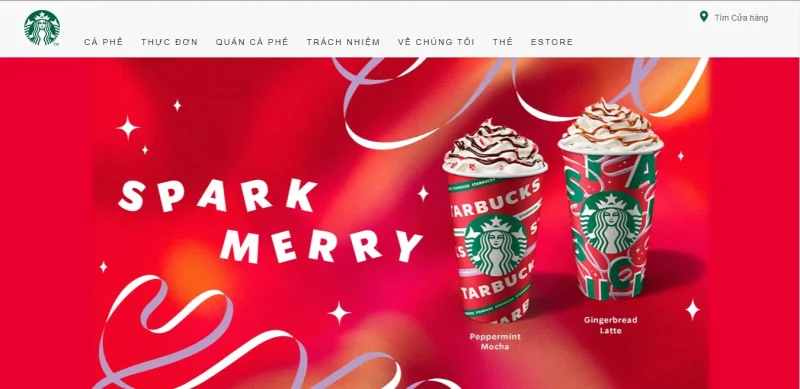
SWOT analysis of Starbucks
The SWOT model is a famous tool known and applied by many businesses because of its usefulness in helping managers analyze important factors inside and outside the business from which to establish strategies. appropriate strategy and business plan.
SWOT stands for 4 words: Strengths, Weaknesses, Opportunities and Threats – is a famous model that helps businesses analyze and build your business strategy effectively.
Among the 4 elements of the SWOT model, strengths and weaknesses are two factors for internal assessment of the business. For these two factors, businesses can control and change. Often these factors are related to company operations, assets belonging to the business, product development, etc.
Besides, the remaining two factors, opportunities and challenges, are external factors that are often related to the market and are macroeconomic in nature. Businesses may not be able to control these two external factors. Businesses can fully seize opportunities, but they must also pay attention and be wary of external challenges that can occur at any time.
>>Read more details about the SWOT model in the article : What is the SWOT model & 7 steps of SWOT analysis
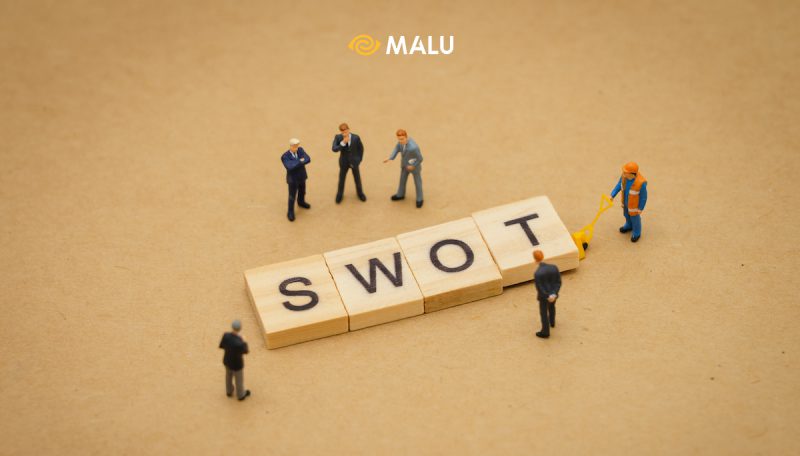
For Starbucks Coffee, the strengths, weaknesses, opportunities and threats of this brand can be analyzed as follows.
Strengths
Regarding the strengths in Starbucks’ SWOT model, this brand has some of the outstanding strengths below.
Famous brand
The first strength of Starbucks is its brand strength. Starbucks has a highly appreciated brand value with a coffee taste that is loved by many people.
In 2019, Starbucks had a brand value of $11.7 billion according to Interbrand rankings. The number of Starbucks stores increased from 1,886 to 31,256 from 1998 to 2019.
Stable financial investment source
Starbucks is a corporation with an extremely solid financial foundation. In 2020, Starbucks achieved annual revenue of about $26.5 billion and profits of about $3.6 billion. This is truly a record business result, further helping to highlight Starbucks’ operating efficiency.
Weaknesses
Besides its strengths, Starbucks also has weaknesses that need to be overcome.
Some of the main weaknesses in Starbucks’ SWOT model can be listed as follows:
Price is not competitive
Starbucks drinks are often priced higher than their competitors. In the past, when there were few coffee shops, Starbucks drinks were considered “luxury” brand drinks and Starbucks also put all its resources into improving coffee quality to match the price. .
However, nowadays, when more coffee shops appear, the pricing of premium products is a weakness of Starbucks.
The product lacks uniqueness
Although it has been available to the public for a long time with a diverse menu of drinks, Starbucks products are still considered lacking in uniqueness. Starbucks does not own any unique products that make the brand stand out in its products.
Opportunities
To take advantage of strengths and overcome weaknesses, Starbucks can seize a number of beneficial opportunities to develop its brand and increase sales as follows.
Currently, most business customers access the Internet and use social networking platforms (Social Media) every day. According to statistics from Statista.com in 2020, people spend an average of 135 minutes a day using social networks.
With undeniable popularity, Social Media are clearly effective platforms for businesses to reach a large number of customers, deploy appropriate marketing campaigns to attract them and increase conversion rates. convert.
>>Read more : [Instructions] 6 steps to implementing an effective Social Media Marketing strategy
In recent years, Starbucks has begun investing in paid online advertising and is more active on social networks to reach a large number of its potential customers. The popularity of social networks will create opportunities for Starbucks to attract customers and increase its brand recognition.
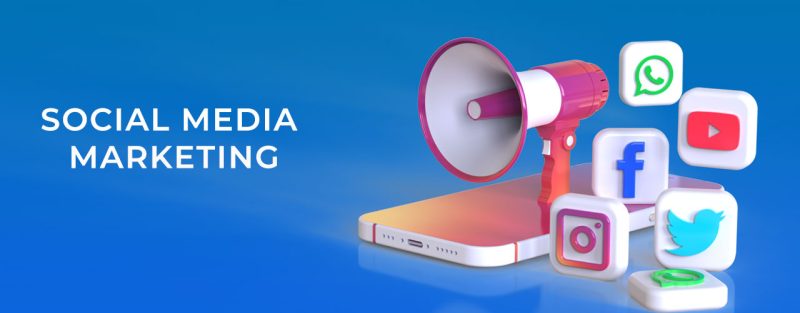
Great demand in developing markets
In developing countries, building a foundation for a brand can take a lot of time, however, the need for local customers to interact is high, so once a solid foundation is established, it is important to expand more doors. Starbucks products are just an overnight thing.
Threats
Besides opportunities, Starbucks also needs to face some challenges. The main challenges in Starbucks SWOT analysis can be listed as follows:
High level of competition
Many of Starbucks’ competitors are willing to reduce prices to attract customers, so this will be a factor that threatens Starbucks’ future stability. With high prices, Starbucks will have a challenge in convincing customers to choose its products over competitors’ products.
Economic depression
In previous economic downturns, Starbucks’ revenue and profits have plummeted, and the same happened in fiscal 2020 in the second quarter when revenue fell 5% and the third quarter fell 38%, partly due to the impact of the Covid-19 pandemic.
SWOT analysis of Starbucks
| Strength | Weakness | Opportunity | Challenge |
|
|
|
|
Detailed analysis of Starbucks’ business strategy
To become one of the leading coffee brands in the world, Starbucks has extremely effective business strategies. So what is Starbucks’ business strategy?
Starbucks’ business philosophy
The philosophy of Starbucks’ business strategy emphasizes Third Place, a place second only to “First Place and Second Place”, which is the place to live and work.
Starbucks wants to become the third most important destination in everyone’s life. “We want to provide the comfort of your home and office. Here, you can sit in a nice chair, chat with friends, watch the street through the windows, surf the web, etc. and enjoy a perfect cup of coffee” – The brand’s US branch manager once shared.
In addition, Starbucks also strives to follow another business philosophy: becoming a responsible and ethical company. This is demonstrated through responsible purchasing plans, including loan support for farmers and forest conservation programs; as well as creating education, training and employment opportunities.
Starbucks’ business strategic goals
Regarding Starbucks’ strategic business goals, this famous coffee brand offers 3 main goals as follows:
- First, Starbucks’ most important goal is to maintain the image of a famous and expected leading brand in the world.
- Second, in its efforts to grow through business expansion in new markets, Starbucks does not forget the goal of maintaining brand identity through preserving traditional products and maintaining unique experiences that the store offers. Their products have been brought to customers.
- Third, Starbucks wants to become a responsible business to the community and committed to social issues.
Starbucks’ competitive advantage
As for Starbucks’ competitive advantage, this brand has some advantages over its competitors as follows.
Products are always of high quality
Starbucks serves its coffee products of the highest quality. Besides, Starbucks also ensures the absolute accuracy of the coffee roasting, grinding and brewing machines
Additionally, the coffee beans Starbucks uses are grown to the highest quality standards, using responsible coffee growing principles.
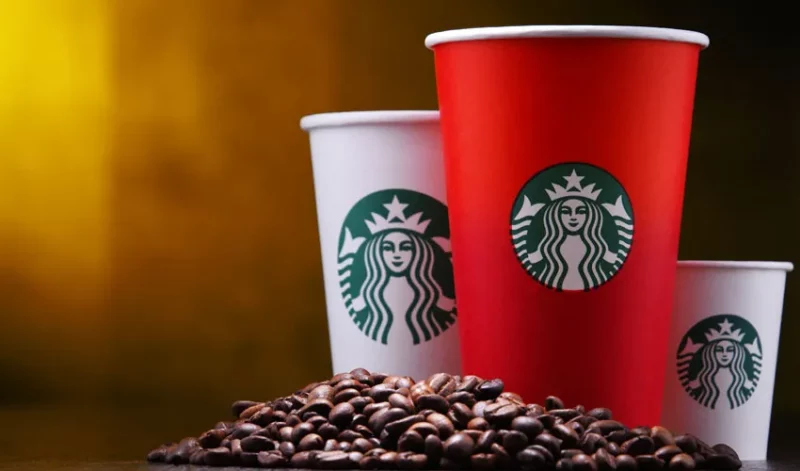
Balance between profit and business ethics
Besides focusing on business to increase profits, Starbucks also focuses on social activities such as protecting the environment. This brand has made statements about its environmental protection mission as follows:
- Strive to buy, sell and use environmentally friendly products.
- Realizing that financial responsibility is essential for our environmental future
- Integrate environmental responsibility into company values.
- Encourage all associates to participate in the mission of protecting the environment
Global supply chain
Starbucks is known to have an international supply chain that spans the globe. Starbucks sources its coffee beans from three coffee producing regions: Latin America, Africa, and Asia-Pacific.
Starbucks’ extensive coffee supply chain contributes significantly to strengthening this brand as Starbucks’ sales and production activities all have a solid backing of coffee inputs.
Starbucks business strategy scope
To be competitive, the scope of Starbucks’ business strategy is the market segments that this brand targets. In particular, Starbucks focuses on the customers and regions and geographies where the products will be provided. From determining the strategic scope, Starbucks will carry out appropriate packaging design as well as research and develop products that suit customers’ tastes and needs.
Starbucks’ market segmentation can be analyzed as follows:
- Market segmentation by geography : Based on population density and product consumption ability, Starbucks will focus mainly on customer segments living in large cities or densely populated areas such as general. Apartments, high-rise buildings, shopping centers,…
- Market segmentation by demographics : Starbucks focuses on customer segments between the ages of 25 and 40, with high income and well-off.
>>Read more about market segments of other famous brands in the article : What is market segmentation? 4 common types of market segmentation
Starbucks’ business strategy activities
Regarding Starbucks’ strategic business activities, this brand has focused on developing and improving the following activities.
Research and development
Starbucks always focuses on research and product development to bring customers the best products and services.
In 800 of its business areas, Starbucks has installed automatic coffee machines to speed up customer service. In addition, Starbucks also applies card prepayment for bills from $5 to $500, this helps them reduce transaction time by up to half, and they announced that they have provided up to 70 million cards. to the market.
Another innovation of Starbucks is the introduction to the market of Starbucks Express Coffee service, this is the most groundbreaking innovation ever based on the combination of online ordering and express delivery. Customers can order and pay in advance through the Starbucks Express website.
Not stopping there, Starbucks Coffee continues its improvement efforts with strong innovations in stores. They expand and speed up Internet connections at stores in more than 1,200 service areas in North America and Europe. Starbucks Coffee calls this the world’s largest wifi network project, collaborating with partners including Mobile International, Deutsche Telekom’s wireless network provider, and Hewlett Packard.

Technology
Regarding technological activities in Starbucks’ business strategy, this brand is one of the leading coffee brands in digital transformation.
In 2016, Starbucks tested AI technology in sending personalized emails to customers: Before applying AI technology, Starbucks could only send 30 different email templates to customers, but after applying AI. , Starbucks was able to automatically create and send 400,000 completely personalized email templates to customers, all in real time.
In addition, Starbucks invested heavily in applying AI artificial intelligence technology to enhance customer understanding and personalization.
The Starbucks Rewards program, electronic payment system as well as mobile ordering application have helped this brand collect a large amount of data about customer segments. Starbucks has collected 30 million digital connections to serve user personalization activities, including data about the time of day the order is placed, the type of drink they choose, and each person’s special preferences. This information will then be combined with geographical factors and time of year to provide drink suggestions for each individual.
In 2017, Starbucks also caught up with the 4.0 wave when it launched a virtual assistant called My Starbucks barista, allowing users to order and pay through voice communication with the virtual assistant. This helps customers experience the feeling of chatting like with a real barista in real life.
Starbucks is striving to be the leader in Wi-Fi hotspot performance. After years of providing customers with mediocre AT&T Wi-Fi service that was not very effective, Starbucks is applying Google’s service to provide super high-speed access, possibly standard Wi-Fi. -Fi is faster than the current standard that most customers can access elsewhere.
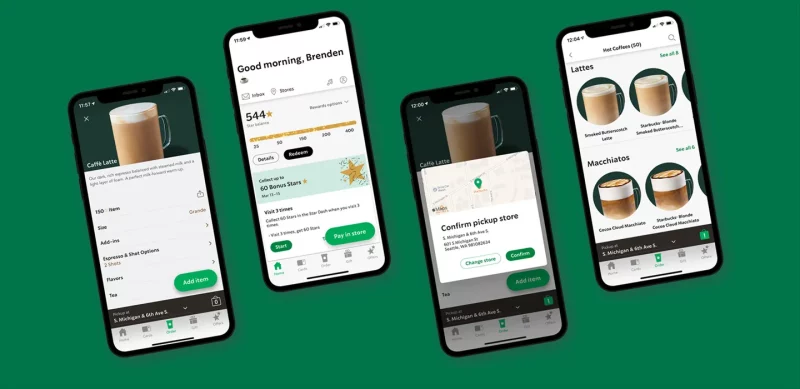
Human resources management
Through years of expansion and development, Starbucks has created a work culture that focuses on employee morale and working environment, encourages them to create friendly relationships within the team and always considers employees Members are “gods” that need to be taken care of with all their might.
At Starbucks, employees are often called by the more formal name “co-workers”, even part-time employees (in the US) always have the opportunity to receive company stocks and insurance. During the economic crisis, when retail companies laid off a series of employees, Starbucks persisted in investing in skills training for its employees, including bartending courses and even educational courses. Can be converted into credit at many universities in the US.
Former company director Howard Behar believes that employees who are well cared for and feel satisfied will thereby provide care and provide the best experience for customers. A Starbucks employee once wrote on his personal page, “No Starbucks employee has ever ordered me to do anything. They always start with: ‘Can you help me a little?’.”
Starbucks managers believe that building a company culture that values the relationship between employees and their workplace will further engage employees in their work environment. This leads to building a comfortable and friendly working environment in all Starbucks stores around the world, making Starbucks a “third place” between customers’ home and work, where they can enjoy the “experience” in the most natural way.
Marketing manager
Regarding Marketing management in Starbucks’ business strategy, this brand has deployed its Marketing strategies according to the 4P Marketing Mix model .
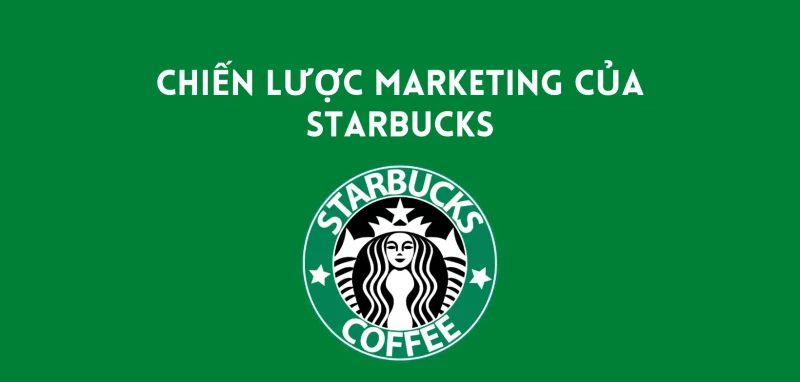
Product
When analyzing Starbucks’ marketing strategy regarding products, Starbucks used a product diversification strategy to attract customers and serve the diverse needs of target customers.
In addition to products sold all year round, Starbucks also constantly renews its products and product lines with seasonal products, limited edition products, products for the holiday season, etc.
Besides diverse products, Starbucks also always focuses on improving the quality of its products and services. Starbucks always wants to bring rich aromatic coffee cups, unique flavored cakes and teas, and professional service style from staff. These are the USPs (Unique Selling Propositions) of Starbucks to attract its customers.
Price
For Starbucks’ marketing strategy regarding price (Price), this brand has used the premium product pricing strategy (Premium Pricing Strategy).
>>Read more about other popular product pricing strategies in Marketing in the article : Top 10 popular product pricing strategies in marketing
With Starbucks’ marketing strategy, through high-end product pricing, this brand taps into the behavioral tendency of consumers to always think that expensive products will have high value, which has helped the Starbucks brand maintain its reputation. image of a premium and extremely high-quality beverage brand.
It can be seen that beverage products and bakery products sold by Starbucks have higher prices than usual. To explain this, it can be seen that Starbucks focuses on product quality and conveys the message that the products provided to customers are high-value products. From carefully selecting coffee beans to strict processing processes with a team of professionally trained staff, Starbucks brand products cannot be cheap.
Distribution system (Place)
Extensive distribution system is one of Starbucks’ effective marketing strategies.
At first, Starbucks sold its products at Starbucks Coffee shops. As the Internet grows, Starbucks offers products in Starbucks Online stores.
Additionally, some products are sold through retailers worldwide. The company also allows customers to use the Starbucks App to place orders anytime, anywhere. This proves that the “giant” Starbucks has adapted quite quickly to changes in time, technology, and market conditions.
Promotion mix (Promotion)
When analyzing Starbucks’ marketing strategy on mixed promotion, this brand has focused on implementing brand promotion campaigns and applying attractive sales discount programs.
Starbucks has taken full advantage of social networks, becoming one of the most mentioned coffee brands. Knowing that customers not only need to drink coffee but also want to share those moments with friends and family, this brand has increased its presence on popular social networking platforms such as: Facebook, Instagram, Twitter, Pinterest and turn coffee drinking into a customer hobby.
>>Read more details about Starbucks’ Marketing Mix strategy in the article : Detailed analysis of Starbucks’ Marketing strategy
Summary
To become one of the famous coffee brands in the world, Starbucks has built and implemented effective business strategies. The main activities in Starbucks’ business strategy include:
- Research and development
- Technology
- Human resources management
- Marketing manager
Hopefully through this article, you will learn more about Starbucks’ effective business strategies and then use it as a reference to deploy appropriate strategies for your business.
Visit our blog to update good knowledge every day!


